CPT accessories
A.P. van den Berg provides a wide range of CPT accessories, with which you can put together the system that you wish.
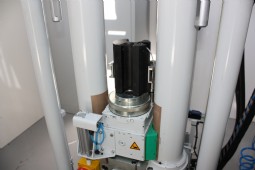
Automatic CPT rod screw
Easier and faster CPT operations with the automatic CPT rod screw. All the operator has to do is place the rod in the CPT rod screw. A sensor will activate the automatic screw to take over the CPT rod and screw it onto the previous one. During pulling the procedure is reversed.
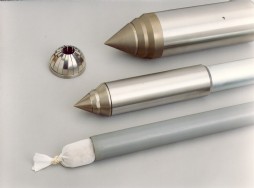
MOSTAP Soil Samplers
Soil samples are often required in addition to CPTs e.g. to validate CPTs. The well-known and widely used MOSTAP Soil Sampler is able to obtain an almost undisturbed soil sample of various diameters and lengths. Pushed into the soil by means of a standard CPT or other pushing system, the MOSTAP is activated by pulling the tip inside and guiding the soil into the sample tube by its suction effect.
A nylon sock ensures minimal friction on the sample during sampling. Closing caps and a plastic liner tube ensure minimal loss during transportation and storage. By replacing the plastic tube with a stainless steel tube, samples can be taken in contaminated soil.
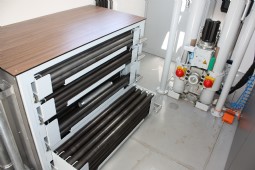
CPT rods and casing tubes
For Cone Penetration Tests and placing casing pipes, several types of rods are available, with several different diameters (Ø45, Ø36, Ø25 and Ø16), lengths and screw threads (AR- and 2R-thread). The corresponding clamping blocks, dirt wipers and pre-push cones are available for all diameters.
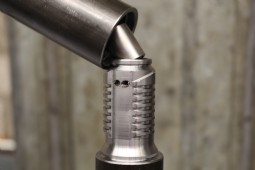
ST-Rods: the unfolding CPT string
They can be in 1 of just 2 states, twisted or untwisted, and it takes very little to transform them from one state to another. Untwisted, the ST-Rods behave a bit like a pearl necklace and can be easily folded onto a reel. Once twisted, the rods form a solid CPT string with a push/pull/buckle performance equal to a string of standard AR rods.
Because the rods have a self seeking bayonet thread they close effortlessly and require just a final, short, single twist to become firmly interlocked, hence the name SingleTwist-Rods. Having rods with this patented design, the transformation process during CPT pushing as well as pulling is like a natural flow and done almost entirely mechanically, making it very robust indeed. Read more.
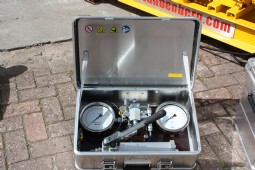
Cone test equipment
The cone testing device is used for checking the cone. The cone is placed in a handy test set-up so that the cone is only ballasted in axile direction. The force exerted on the cone, which can be read on the manometer of the test apparatus, is compared to the value indicated on the data acquisition system. A deviation between the two values is a measure for a correct functioning of the cone.
With the cone testing device the sensors for cone tip resistance and local friction can be checked. Optionally the sensor for pore-water pressure can be checked
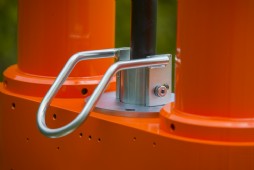
Clamping systems
Depending the work for which the CPT system is to be deployed, different clamping sets can be selected. For example a pushing piece in combination with pulling and catching ball clamps, to make the investment more attractive. To ease CPT operations and to facilitate an easy switch between 36 mm CPT rods and 56 mm rods or casing, more sophisticated clamping systems are adviced. For example a hydraulic push/pull clamp.
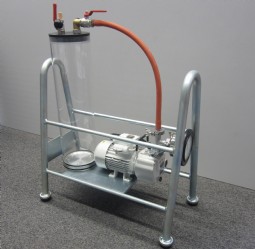
Vacuum device
In order to obtain an excellent pore water measurement, the space between the pressure sensor inside the cone and the outside of the filter, including the filter itself, has to be fully deaerated and filled with silicone oil. Our Vacuum Device is recommended for this operation.
The fully closed environmental friendly and easy to carry and store Vacuum Device can hold up to three 10 cm2 cones or two 15 cm2 cones and is filled with silicone oil. New filters can be used without the need to deaerate these in advance. Deaerating a cone takes less than 60 minutes and additional tools are not needed. The Vacuum Device comes in two power versions: 230 Vac/50 Hz or 115 Vac/60 Hz.
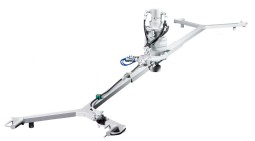
Anchors and anchoring device
When the weight of the CPT system is not sufficient for supplying the necessary reaction force during Cone Penetration Tests, anchors can be used.
The anchors are set with a hand-operated anchor setting device, or an optional HYGAND anchor setting unit that is hydraulically powered by the power pack. With the HYGAND, anchor setting is considerably faster and easier.
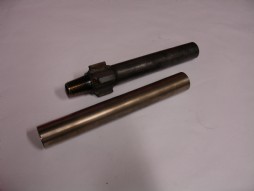
Adaptors
For reduction of the friction along the CPT rods during Cone Penetration Tests in order to reach a greater test depth, adaptor or friction reducers are often used. The adaptor connects the cone with the first CPT rod. A friction reducer is a Cone Penetration Testing rod with cams. Both products are available in many different types and dimensions and can be supplied with for instance cams, rings or wear bushes.
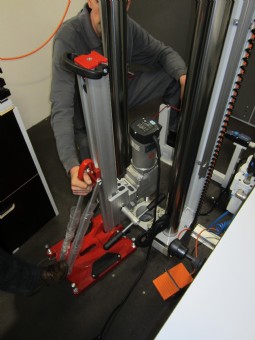
Electric ROTAP
To drill through a hard layer, prior to a CPT, we offer the electrical ROTAP. The weight of the electric ROTAP is low and proven components readily available in the market are used, so it provides for ease of operation and maintenance. Mounting and dismounting of the drill is very easy using just four bolts. By mounting the ROTAP on the HYSON pushing system, reaction forces are absorbed effectively. The HYSON serves as support and guidance during drilling.
The required electricity is supplied from an external power source. This can be a stand-alone power pack or a generator that is driven by the hydraulics of the pushing system. The electric ROTAP is available in many variations. We select the drill that fits your CPT system and additional requirements best.